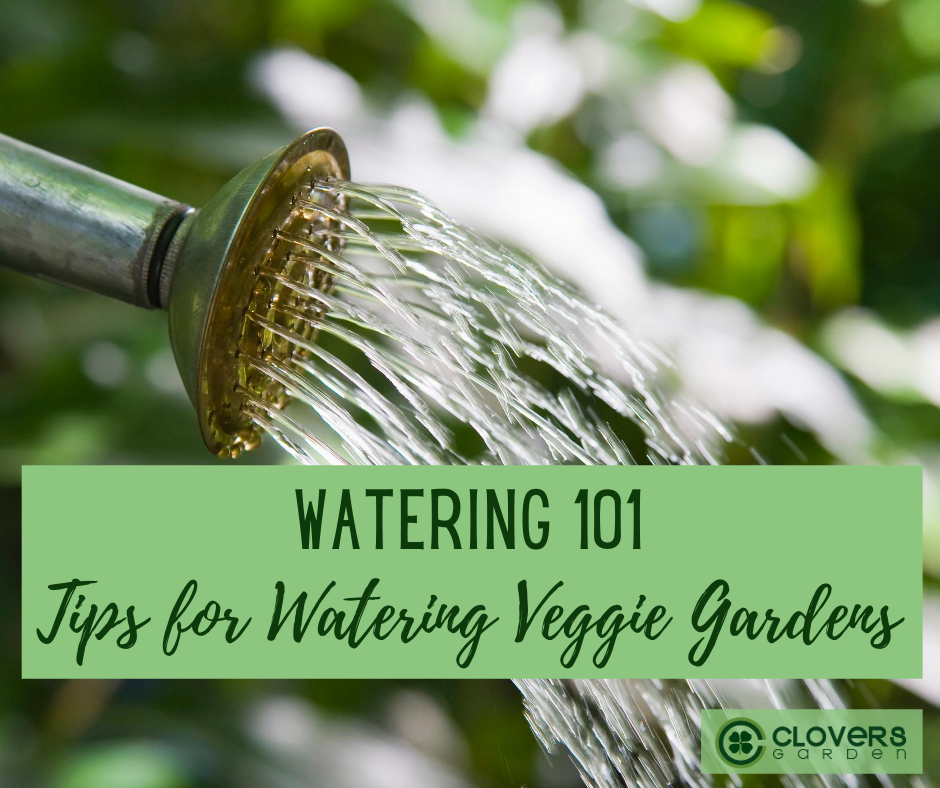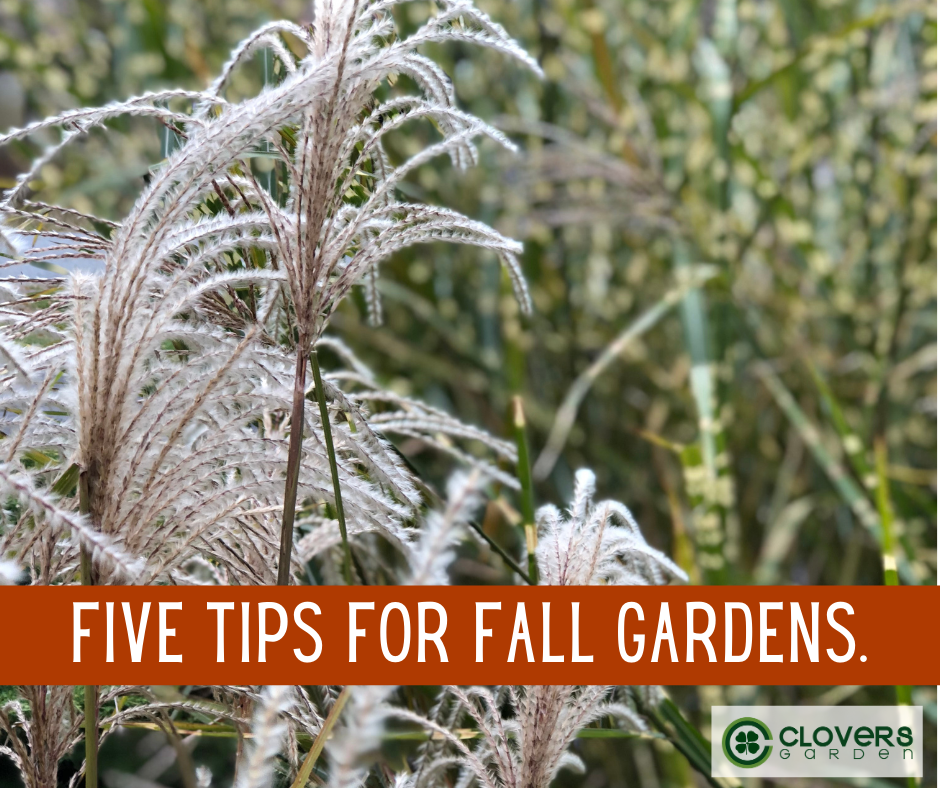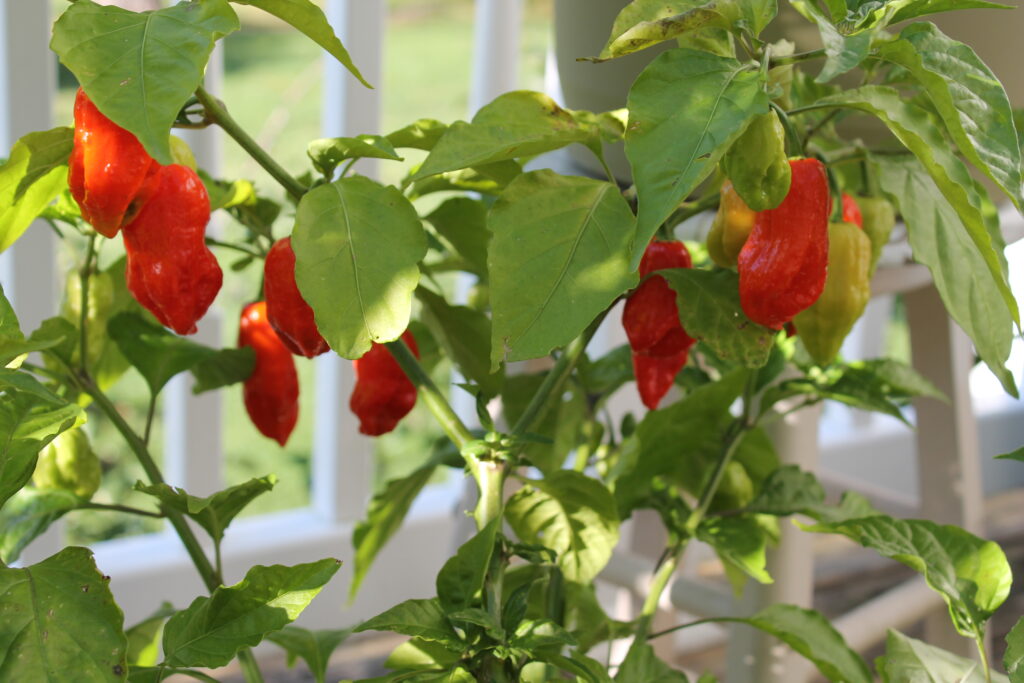
Hot peppers, with their fiery personalities and vibrant colors, are a delight to grow and cultivate. Whether you’re a seasoned gardener or just starting out, growing hot peppers can be a rewarding and spicy adventure. In this comprehensive guide, we’ll walk through everything you need to know to grow hot peppers like a pro, from choosing the right varieties to harvesting your bounty.
Getting Started: Choosing the Right Varieties
Hot peppers come in a wide range of shapes, sizes, flavors, and heat levels. From the mild heat of jalapeños to the fiery intensity of habaneros to the off the chart heat of Carolina Reapers, there’s a pepper out there to suit every taste preference. When selecting varieties to grow, consider your climate, available space, and desired level of heat. Some popular varieties to consider include:
Jalapeño: A versatile pepper with medium heat, perfect for adding a kick to salsas, sauces, and more.
Habanero: Known for its intense heat and fruity flavor, the habanero is not for the faint of heart but can add a bold punch to dishes.
Thai Gong Bao: Small but mighty, these peppers pack a serious heat punch and are commonly used in Thai cuisine.
Cayenne: Long and slender, cayenne peppers are prized for their spicy flavor and are often dried and ground into powder for use in seasoning blends.
Ghost Pepper (Bhut Jolokia): One of the hottest peppers in the world, the ghost pepper boasts a Scoville heat rating that will leave even the most seasoned chili heads sweating.
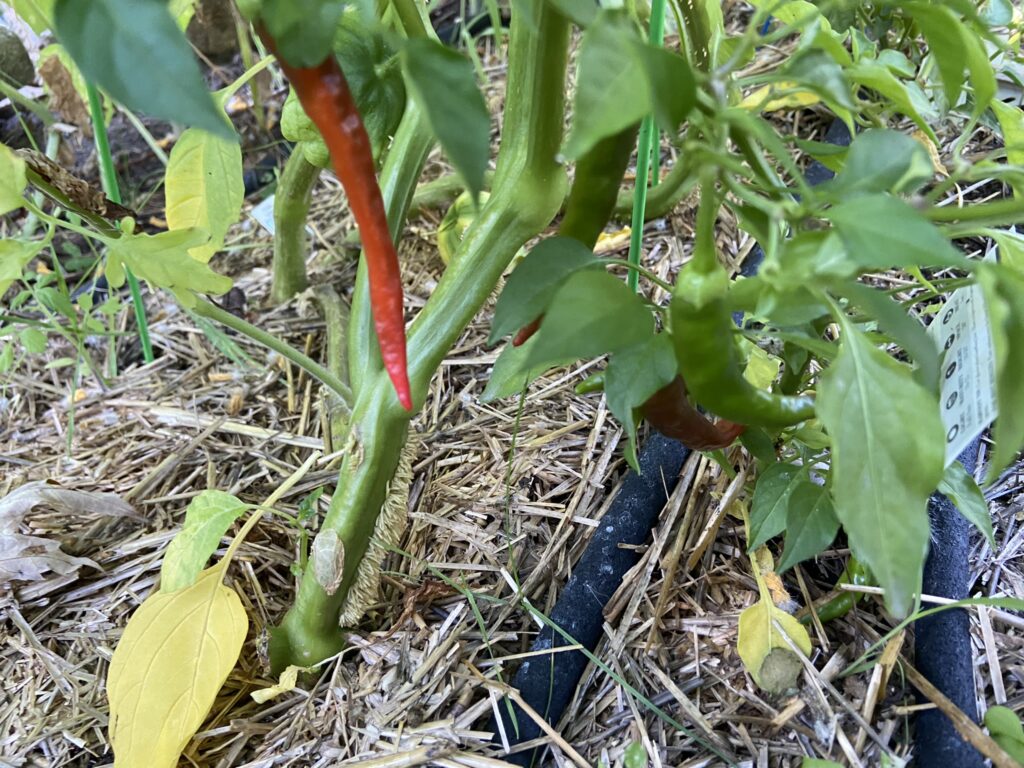
Planting and Care Tips
Once you’ve selected your pepper varieties, it’s time to get your hands dirty and start planting. Here are some tips to ensure your hot peppers thrive:
Choose a Sunny Spot: Hot peppers love warmth and sunshine, so choose a location in your garden that receives at least 6-8 hours of sunlight per day.
Prepare the Soil: Hot peppers prefer well-draining soil with a pH of around 6.0 to 6.8. Amend your soil with compost or aged manure to improve fertility and drainage.
Planting: Plant your pepper seedlings outdoors after the danger of frost has passed and the soil has warmed to at least 60°F (15°C). Space plants 18-24 inches apart to allow for proper air circulation and growth.
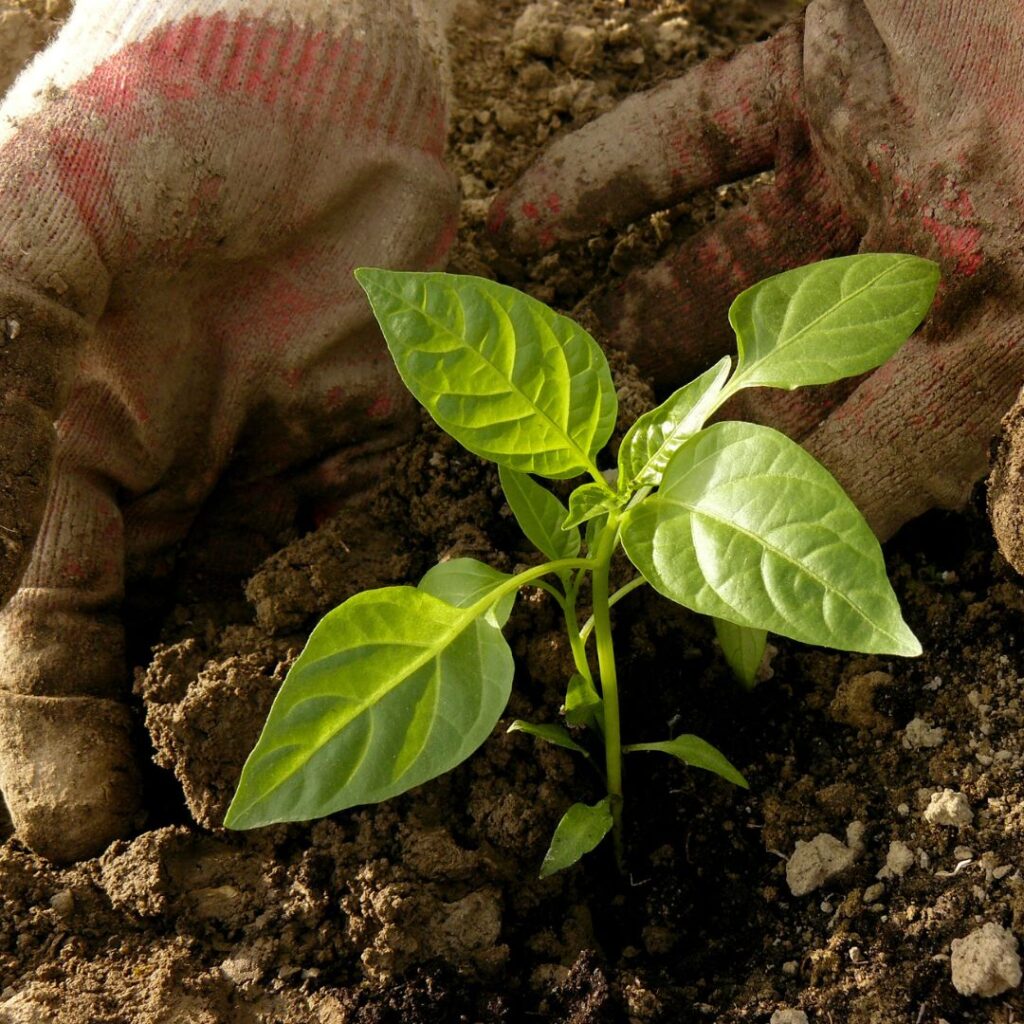
Pepper plants also do well in pots and are perfect for small balcony or patio gardens. Choose a pot big enough for the plant to mature (they will grow to about 10x the size of the seedling). When planting in pots, it’s important to keep the soil well-fed and watered as they will dry out more quickly than in ground gardens.
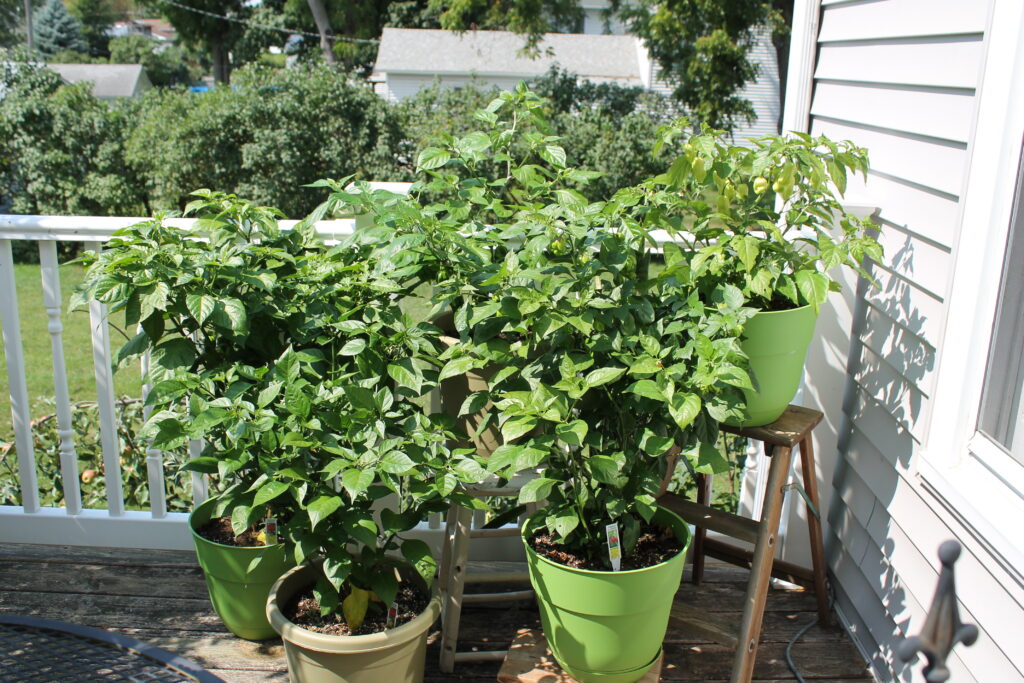
Support: Large plants will benefit from supports such as a cage or trellis to hold heavy branches. As the fruit grows keep an eye on the branches and tie them up if they start to crack or bend.
Watering: Keep the soil consistently moist but overwatered. Water deeply once or twice a week, depending on weather conditions and soil moisture levels.
Fertilizing: Feed your pepper plants with a balanced fertilizer high in potassium (such as a 5-10-10 or 10-10-10 blend) every 4-6 weeks throughout the growing season to promote healthy growth and fruit production.
Interesting Facts About Hot Peppers
Peppers are such a unique fruit, here’s some fun facts to share at your next BBQ:
Scoville Heat Scale: The heat of hot peppers is measured on the Scoville scale, which quantifies the amount of capsaicin, the compound responsible for their spiciness. The higher the Scoville rating, the hotter the pepper. For example, a mild jalapeño typically ranges from 2,500 to 8,000 Scoville heat units (SHU), while a fiery habanero can reach up to 350,000 SHU or more.
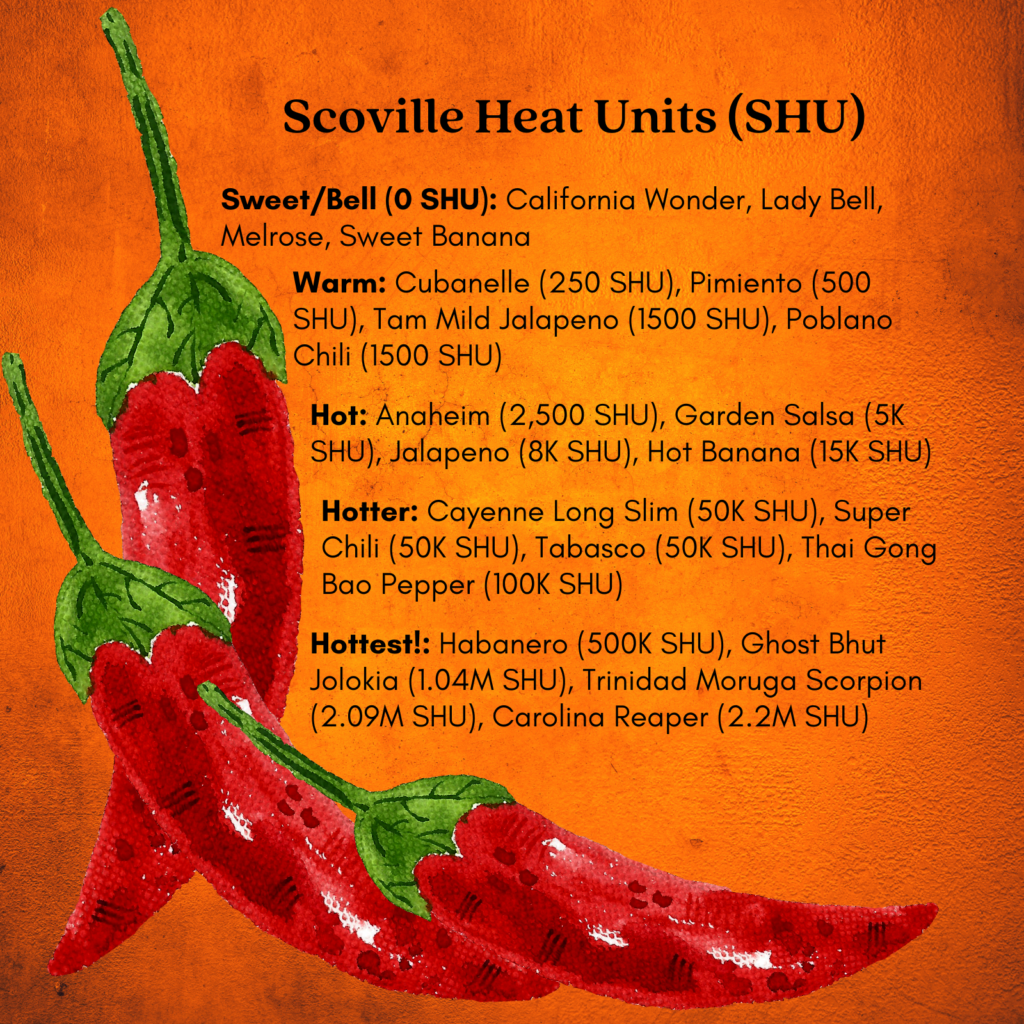
Capsaicin and Endorphins: When you eat spicy food, your body’s response to the capsaicin in hot peppers triggers the release of endorphins, natural chemicals in the brain that create a sense of pleasure and well-being. That’s why some people crave spicy food and even experience a “spice high” from consuming hot peppers.
Birds and Peppers: Hot peppers evolved their spiciness as a defense mechanism against mammals that would otherwise eat their fruit and destroy the seeds inside. Surprisingly, birds are immune to the heat of peppers due to a lack of capsaicin receptors in their mouths, making them important seed dispersers for pepper plants in the wild.
Health Benefits: Beyond their fiery flavor, hot peppers are packed with health benefits. Capsaicin has been shown to have anti-inflammatory, antioxidant, and pain-relieving properties, and regular consumption of spicy foods has been linked to a reduced risk of certain chronic diseases, including heart disease and cancer.
Cultural Significance: Hot peppers have a rich cultural history and play a prominent role in cuisines around the world. From the spicy curries of India to the salsa-drenched tacos of Mexico, peppers add depth and complexity to dishes, as well as a touch of culinary adventure.
Harvesting and Enjoying Your Peppers
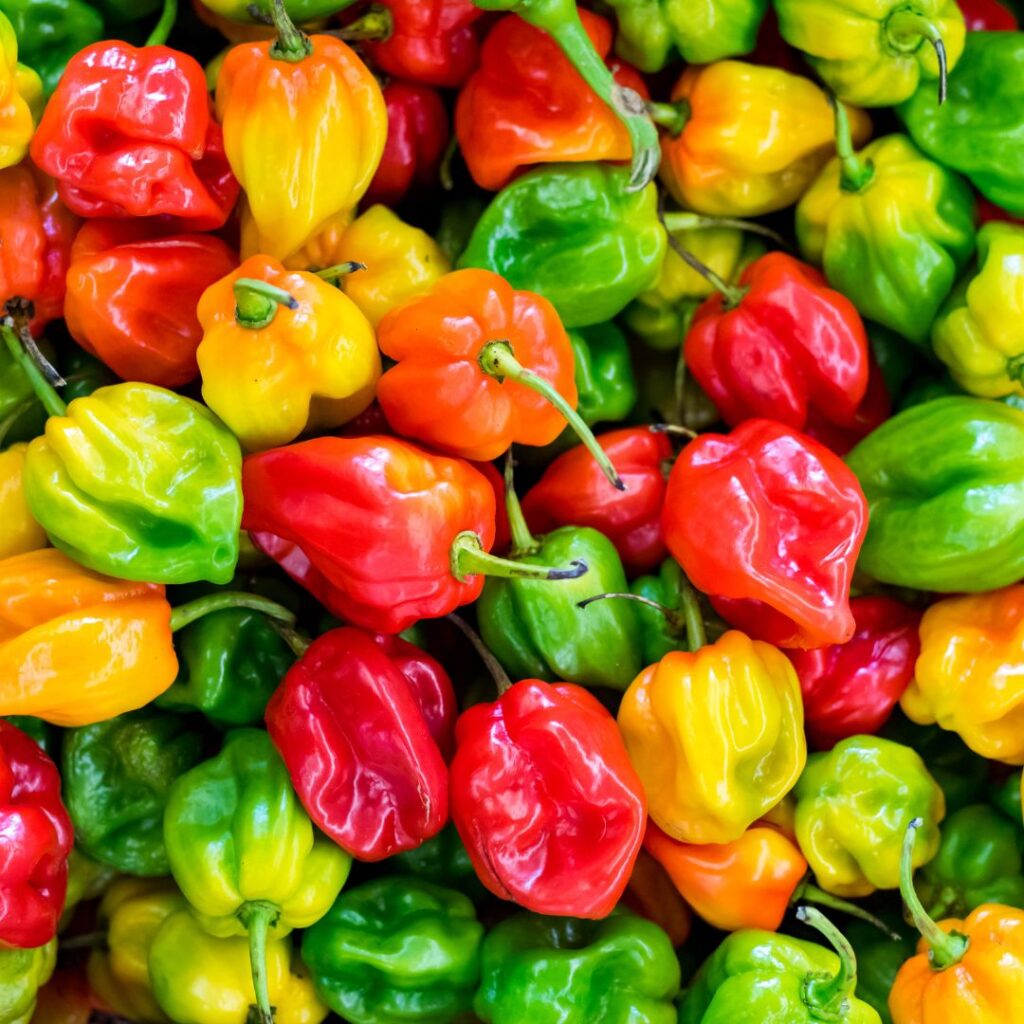
Peppers plants will bear fruit from 60 days (small sweet peppers) to 150 days (some hot peppers). Unlike most garden plants, fruits can be picked at every stage from green to red. Unless you’re planting a unique variety with brown or purple fruit, the pepper will go from green to yellow to orange to red. At red, the fruit is at its ripest point and will be at the sweetest or hottest depending on the variety.
To pick the pepper, gently twist at the stem or use a clean cutting shears. Do not pull on the pepper as you may dislodge the plant from the soil. For extra hot varieties, wear gloves when picking! Even the oils of the leaf and stem are hot.
Store harvested peppers in a cool, dry place or refrigerate them in a paper bag for up to two weeks. You can also freeze peppers whole or chopped for longer-term storage.
Whether you dice them into salsa, pickle them for a tangy crunch, or dry them for homemade chili powder, there are countless ways to enjoy your homegrown hot peppers. Get creative in the kitchen and experiment with different recipes to showcase the unique flavors and heat levels of your peppers.

